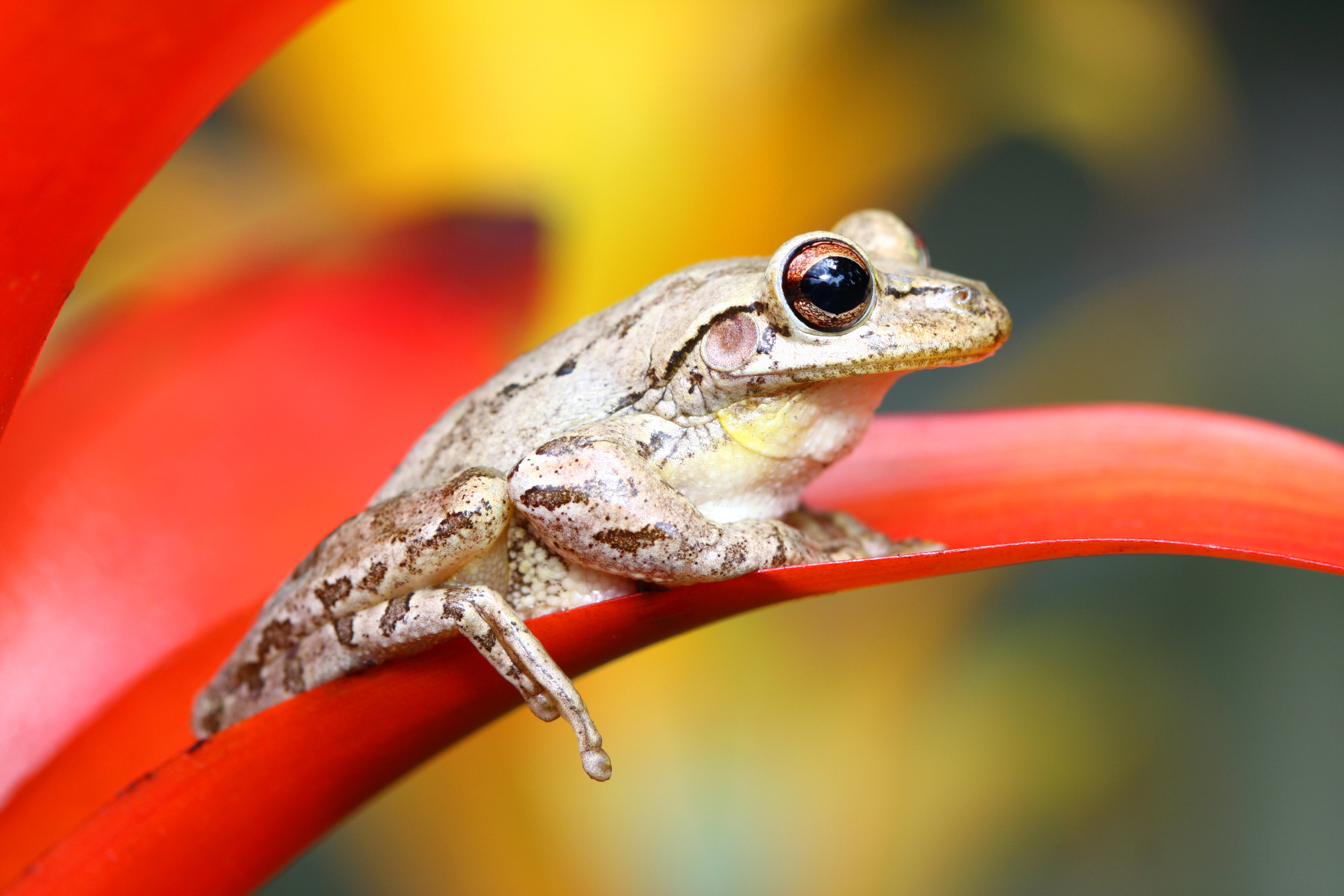Cuban tree frog is a large tree frog native to Cuba, the Bahamas, and the Cayman Islands. Female Cuban tree frogs measure about 2 to 6 inches (5 to 15 centimeters) long. Males are smaller, about 2 to 3 1/2 inches (5 to 9 centimeters) long. Human activities have introduced the Cuban tree frog into many other Caribbean islands, Costa Rica, Florida, and Hawaii. Cuban tree frogs live in moist, narrow crooks in trees and bushes, between the stem and branch of banana leaves, and among tree ferns, palms, and roofing tiles. They may also be found in basements, bathrooms, crop plants, drainage ditches, flowerpots, swimming pools, toilets, and water tanks.

The Cuban tree frog is usually creamy white to light brown in color. But it can be dark brown, green, gray, yellow, or a combination of these colors. It can also change colors to camouflage itself. The Cuban tree frog has large, buggy eyes and rough, warty skin. It has big, sticky pads called adhesive disks on its toes that help it climb trees and cling to glass. The skin on its head is fused with the bone of the skull, which it uses to plug holes in tight spaces to keep itself moist. The Cuban tree frog eats such insects as beetles and roaches, in addition to spiders, snails, smaller frogs, lizards, and others of its species.
A female Cuban tree frog lays hundreds to thousands of eggs in ditches, ponds, pools, wetlands, or other standing water such as that found in birdbaths. The eggs hatch in as little as one day. Cuban tree frog tadpoles may eat other tadpoles. The tadpoles become frogs in about one to two months.
Cuban tree frogs were introduced into Florida in the 1920’s and 1930’s, most likely as hitchhikers in cargo containers on ships. In Florida, they are considered an invasive species because they eat the state’s native frogs, harm native ecosystems, and bother people. Cuban tree frogs cling to windows and walls of houses near lights to catch insects that are attracted to the light. The frogs have also caused power outages by short-circuiting utility switches. Cuban tree frogs have caused similar problems in other areas where they have been introduced.
